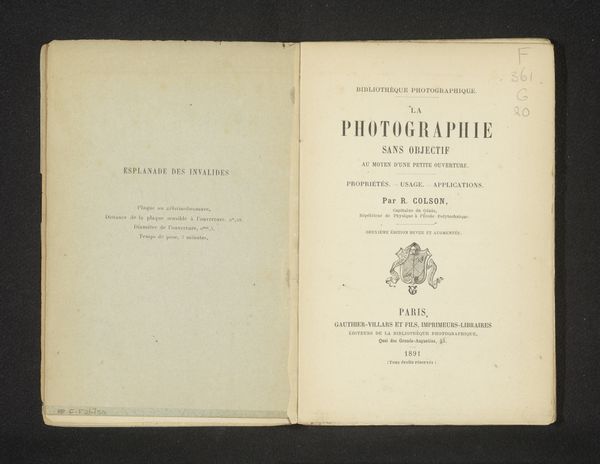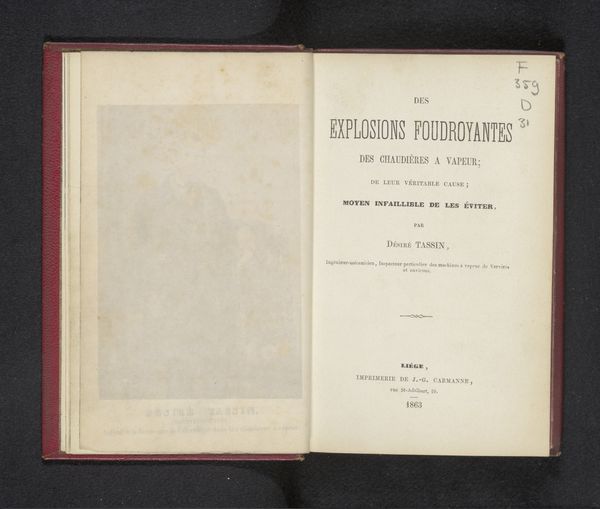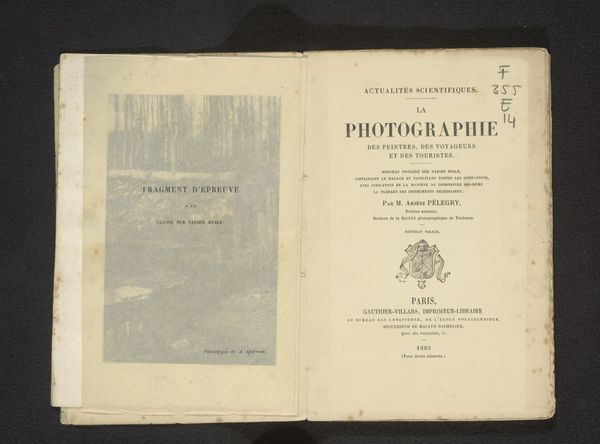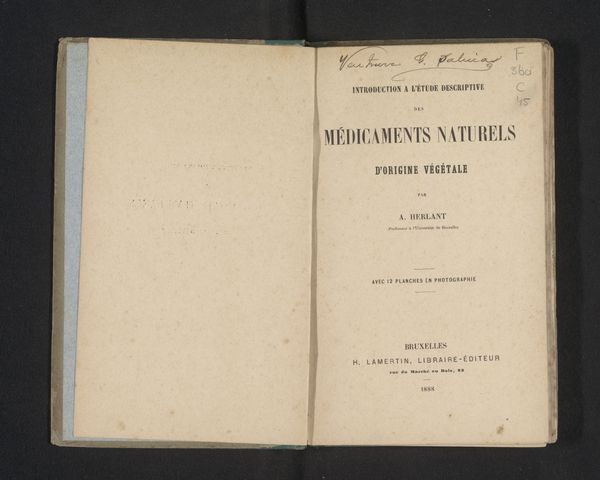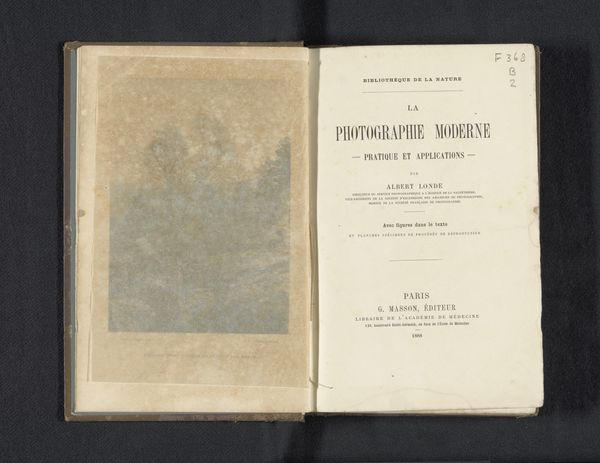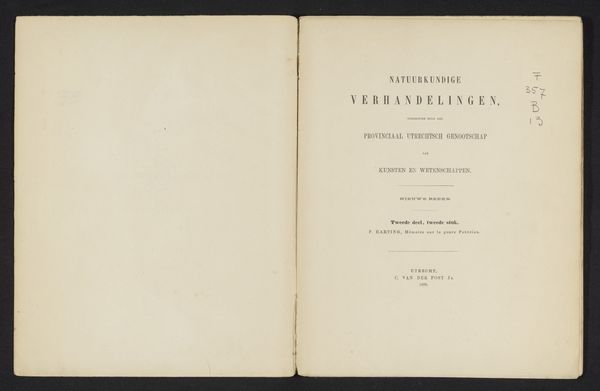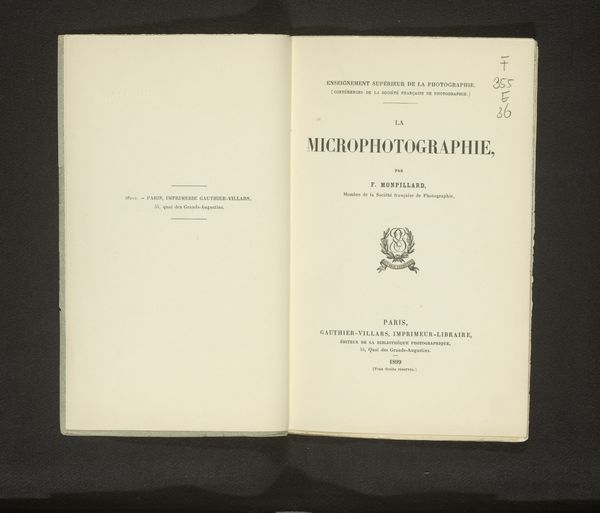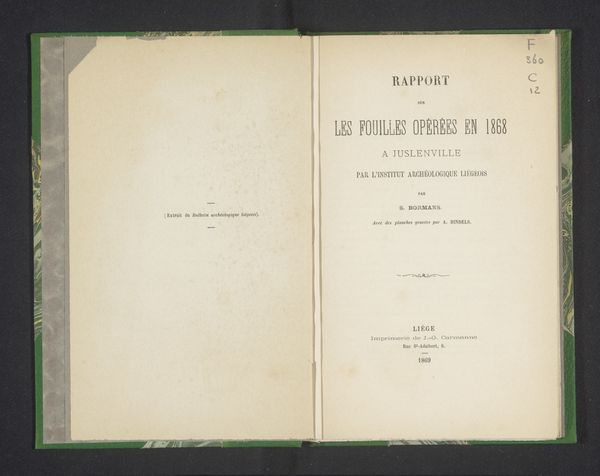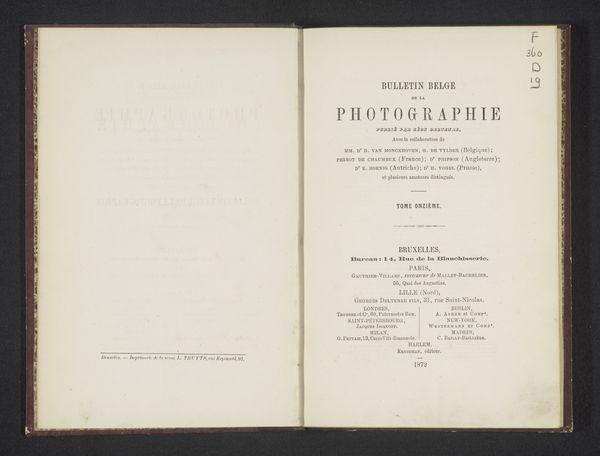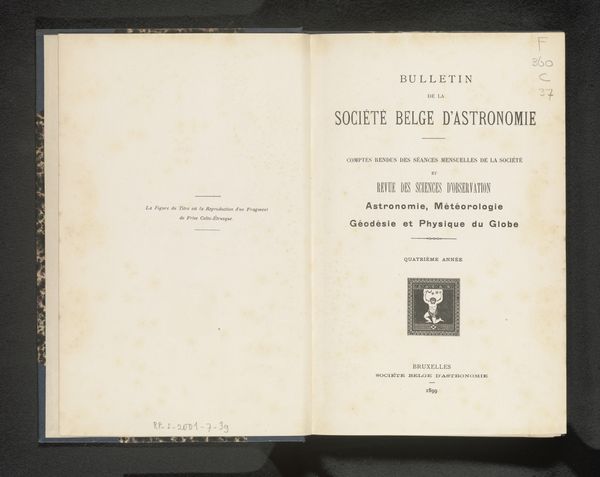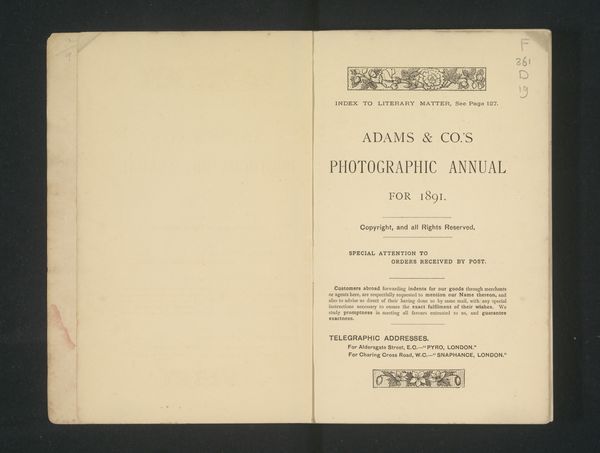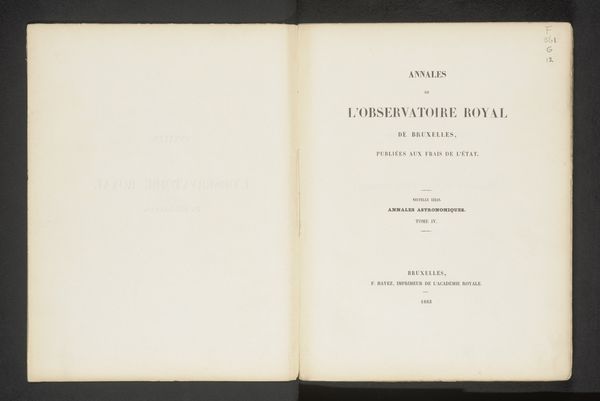
La photographie moderne : traité pratique de la photographie et de ses applications à l'industrie et à la science 1896
0:00
0:00
print, photography
#
aged paper
#
book binding
#
homemade paper
#
paperlike
# print
#
sketch book
#
personal journal design
#
photography
#
personal sketchbook
#
fading type
#
publication mockup
#
letter paper
Dimensions: height 231 mm, width 155 mm, thickness 48 mm
Copyright: Rijks Museum: Open Domain
Editor: Here we have "La Photographie Moderne" by Albert Londe, published in 1896. It seems to be an instructional manual on photography. It’s fascinating to see how much detail is packed into one spread! How do you read this work in its historical context? Curator: The publication of Londe’s treatise speaks volumes about the moment photography was entering into broader adoption. The book cover is itself a document that shows us the role photography was beginning to play within the rapidly industrializing world and the impact of these tools within science and technology. Londe’s book also reveals how photographic expertise was being formalized and disseminated, marking a shift in power dynamics, where specialized knowledge was increasingly available in print to a growing middle class. Who was photography *for* at the turn of the century? Editor: So, it's about accessibility and the democratization of knowledge. I see, so Londe isn't just showing "how," but influencing "who" gets to participate. The book itself, with its slightly faded photographs, feels like a piece of evidence. Curator: Precisely! Look closely at the illustrations; what do you notice about the subjects chosen? What can that tell us about who photography centered at this early stage? The aesthetic choices reflected in photography—its intended use and its limitations—are very much about defining the gaze. Editor: I see, so even a technical manual isn’t neutral. It subtly reinforces who and what matters. That’s made me see the book in a new light – pun intended, I suppose! Curator: Absolutely! By examining the early textbooks like Londe’s, we can decode visual conventions and expose whose stories were amplified—and whose were silenced—in shaping photography’s place in society. It's about understanding that even "objective" guides carry a cultural lens.
Comments
No comments
Be the first to comment and join the conversation on the ultimate creative platform.
